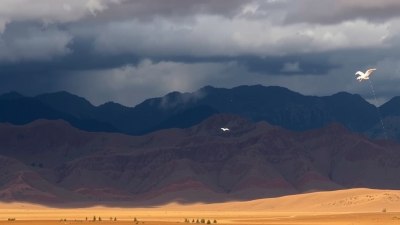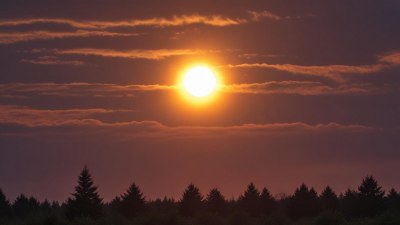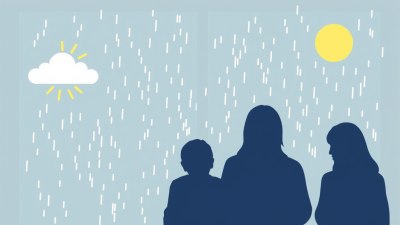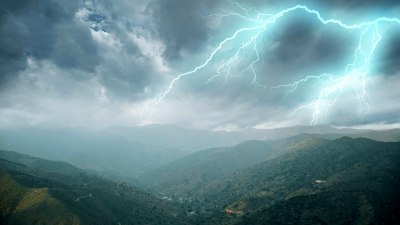What Causes a Rain Shadow and Where It Happens
Explore what causes a rain shadow effect and discover where this climate phenomenon occurs around the world.

The rain shadow effect is a fascinating meteorological phenomenon that plays a crucial role in shaping local climates and ecosystems. Understanding what causes a rain shadow and where it typically occurs can provide insight into weather patterns, agriculture, and natural habitats worldwide.
What is a Rain Shadow?
A rain shadow is an area of significantly reduced rainfall on the leeward side of a mountainous region, opposite to the windward side. When moist air approaches a mountain range, it is forced to rise. As it rises, the air cools and loses its ability to hold moisture, resulting in precipitation on the windward side. After releasing much of its moisture, the air descends on the opposite side of the mountain, warming and becoming drier. This creates an arid or semi-arid climate, known as the rain shadow.
The Process Behind a Rain Shadow
The formation of a rain shadow involves several key meteorological processes. First, prevailing winds carry moist air masses from bodies of water toward land. When these air masses encounter mountain ranges, they are pushed upward due to the physical barrier. The rising air expands and cools adiabatically, leading to condensation and cloud formation.
As clouds form and move up the slope, precipitation occurs, especially when the air reaches its dew point. The release of moisture leads to a wet environment on this windward side filled with lush forests or rich vegetation depending on the region. This is known as orographic rainfall.
Once the air mass passes over the mountain peak, it begins to descend the leeward side. Descending air compresses and warms, increasing its capacity to hold moisture, but as it has already lost most of its moisture load on the windward side, it becomes dry. This drying effect reduces precipitation significantly, creating a dry region called the rain shadow.
Key Factors Influencing Rain Shadows
Several geographic and atmospheric factors influence the strength and extent of a rain shadow:
- Mountain Elevation: Higher mountains force air to rise more sharply, promoting greater precipitation on the windward side and a more intense rain shadow.
- Prevailing Winds: The direction and strength of the winds carrying moisture dramatically affect where and how rain shadows develop.
- Moisture Source: Proximity to oceans or large lakes supplies more moisture to the incoming air masses, enhancing orographic precipitation.
- Mountain Orientation: The alignment of the mountain range relative to prevailing winds changes which areas experience rain shadows.
Examples of Rain Shadows Around the World
Rain shadows are common near major mountain ranges globally. Some famous examples include:
1. The Sierra Nevada and Great Basin, USA
The Sierra Nevada mountain range in California causes a prominent rain shadow effect with moist Pacific air forced up the western slopes, supporting lush forests. On the eastern side, the rain shadow creates the arid Great Basin desert, including parts of Nevada and Utah.
2. The Andes and Atacama Desert, South America
The world’s driest desert, the Atacama Desert, lies in the rain shadow of the Andes Mountains. Moist air from the Pacific is blocked and precipitated on the western slopes, leaving the eastern side extremely arid.
3. The Himalayas and Tibetan Plateau
The Himalayas create a significant rain shadow effect for the Tibetan Plateau by blocking summer monsoon rains. The plateau is a vast high-altitude desert due to this phenomenon.
4. The Southern Alps and Canterbury Plains, New Zealand
In New Zealand, moist westerly winds strike the Southern Alps and release heavy rainfall on the west coast. The eastern Canterbury Plains lie in the rain shadow, resulting in significantly less precipitation.
Impacts of Rain Shadows on Local Environment and Human Activity
Rain shadows heavily impact vegetation cover, agriculture, and settlement patterns. Areas in rain shadows tend to be deserts or semi-arid zones with sparse vegetation. These conditions can limit farming activities, necessitate irrigation, and influence land use.
On the other hand, windward slopes with abundant moisture often support diverse forest ecosystems and richer soils, sustaining different agricultural practices and wildlife.
In addition, understanding rain shadows aids in water resource management and predicting climatic conditions in affected regions.
How Climate Change May Affect Rain Shadows
Climate change could alter patterns of precipitation and air circulation, modifying rain shadow effects in some regions. Changes in the strength and direction of prevailing winds or increased atmospheric temperatures might shift moisture transport, impacting the intensity and location of rain shadows. Scientists continue to study these potential changes to better anticipate future climatic impacts on various ecosystems.
Detecting and Studying Rain Shadows
Scientists use a range of tools to study rain shadows including satellite imagery, weather stations, and climate models. Satellite data help observe cloud patterns and precipitation distribution relative to mountain ranges. Ground stations measure humidity, rainfall, and temperature on both sides of mountains, verifying the presence of rain shadows.
Climate and weather models simulate atmospheric conditions, enabling researchers to predict how changes such as mountain erosion or deforestation might influence rain shadow phenomena.
Overall, rain shadows highlight the intricate interplay between topography and atmospheric processes shaping Earth's diverse climates.
By understanding rain shadows, geographers, climatologists, and environmental planners can better predict weather patterns and manage natural resources in affected regions.











